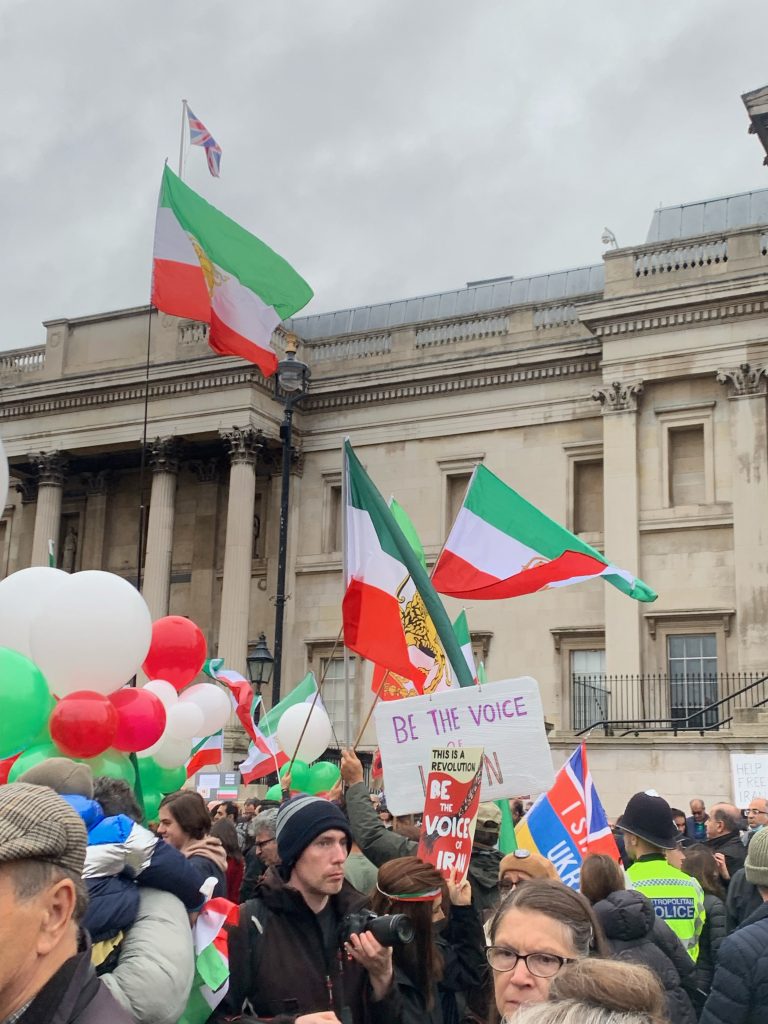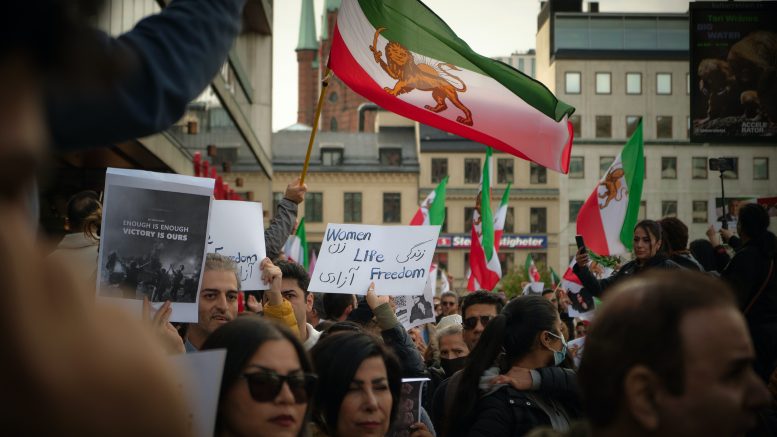Iranian security forces opened gunfire, killing at least two protesters, on Tuesday, 15 November.
The protest, sparked by the death of Mahsa Amini, is one of many demonstrations since her death in September. International criticism of the Iranian government is only expected to heighten as the number of people killed by security forces continues to increase.
This comes as the UN Human Rights Office calls for the immediate release of “thousands of people taking part in peaceful demonstrations”.
Crowds were captured chanting “This year is the year of blood, Seyed Ali will be toppled,” outside of a metro station in Tehran, referring to Iran’s Supreme Leader Sayyid Ali Hosseini Khamenei.

Photo: Cerah Handsaker
How did the protests get so out of hand?
22-year-old Iranian woman, Mahsa Amini, died days after being arrested by morality police for allegedly not complying with strict rules on head coverings. They took Amini in for “re-education”.
Eyewitnesses said Amini was beaten in a transport van before being taken to emergency care. Three days later, the young woman died in hospital after falling into a coma hours after her arrest.
Photographs of Amini appear to show that she was brutally beaten. Reportedly, she was bruised and unconscious before receiving treatment.
According to Iranian officials, the woman had lost conciousness at the police station and later passed away due to a heart attack. Time of death also varies from source to source, with some stating she died after three days, and others as soon as one hour later.
Iranian media has widely varying accounts of Amini’s death, with many understanding that Amini’s family have been forced into following a “state-friendly” narrative. Members of the family have gone as far to be threatened with arrest in the case of uncompliance.
What was her crime? Not wearing an appropriate headscarf (hijab). While her family was traveling from Kurdistan to Tehran, she was stopped by the police. Her brother witnessed the assault.
The hijab has been obligatory for women in Iran since 1983, after the 1979 Islamic revolution introduced the idea of hijab law.
Amini’s murder has sparked worldwide protests, all advocating for women’s rights in Iran. Globally, many celebrities and public figures have publicly declared support for the protest.
Protests in London
The Iranian Embassy, at Princes Gate Kensington, has been the scene of protests to shut down the embassy.
Activists have called for a rename of Princes Gate (the road that the Iranian embassy is on) to ‘Mahsa Amini Street’ as a tribute to the 22-year-old. The action would be a symbol of support to all protesters, and is widely supported.
Protests in Trafalgar Square on 5 November gained national media attention, with a jam-packed show of public support. Further protests are scheduled for Saturday 19 November at 1pm with a global rally being organised in London from the Iranian Embassy to No.10 Downing Street.
Words: Cerah Handsaker and Maryam Shahzadi | Subbing: Nadya Salie


Be the first to comment on "“This is the year of blood”; continued Iranian protests kill activists"